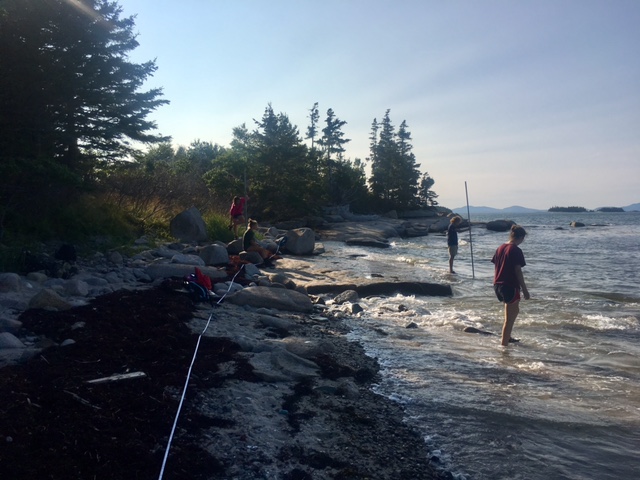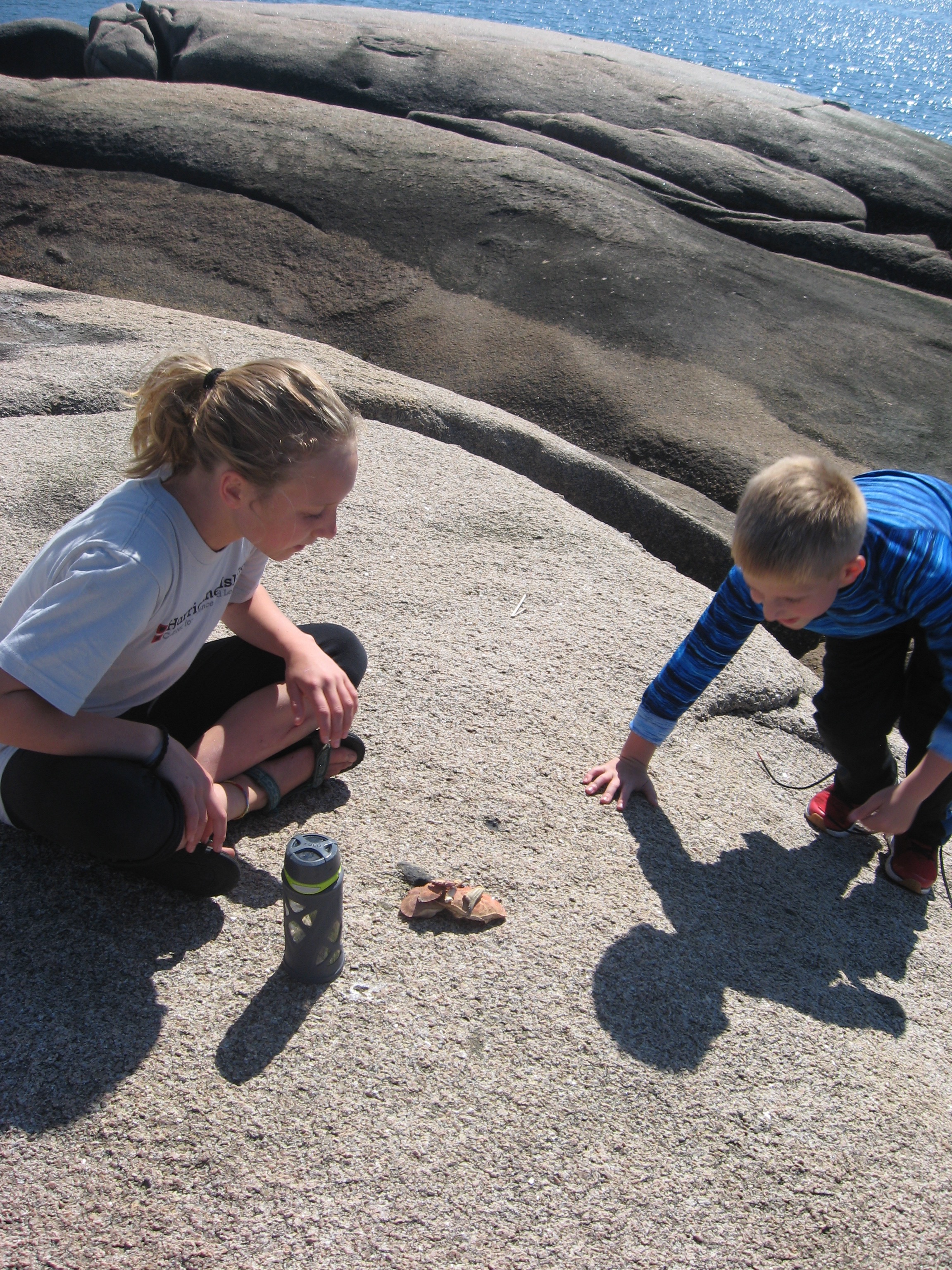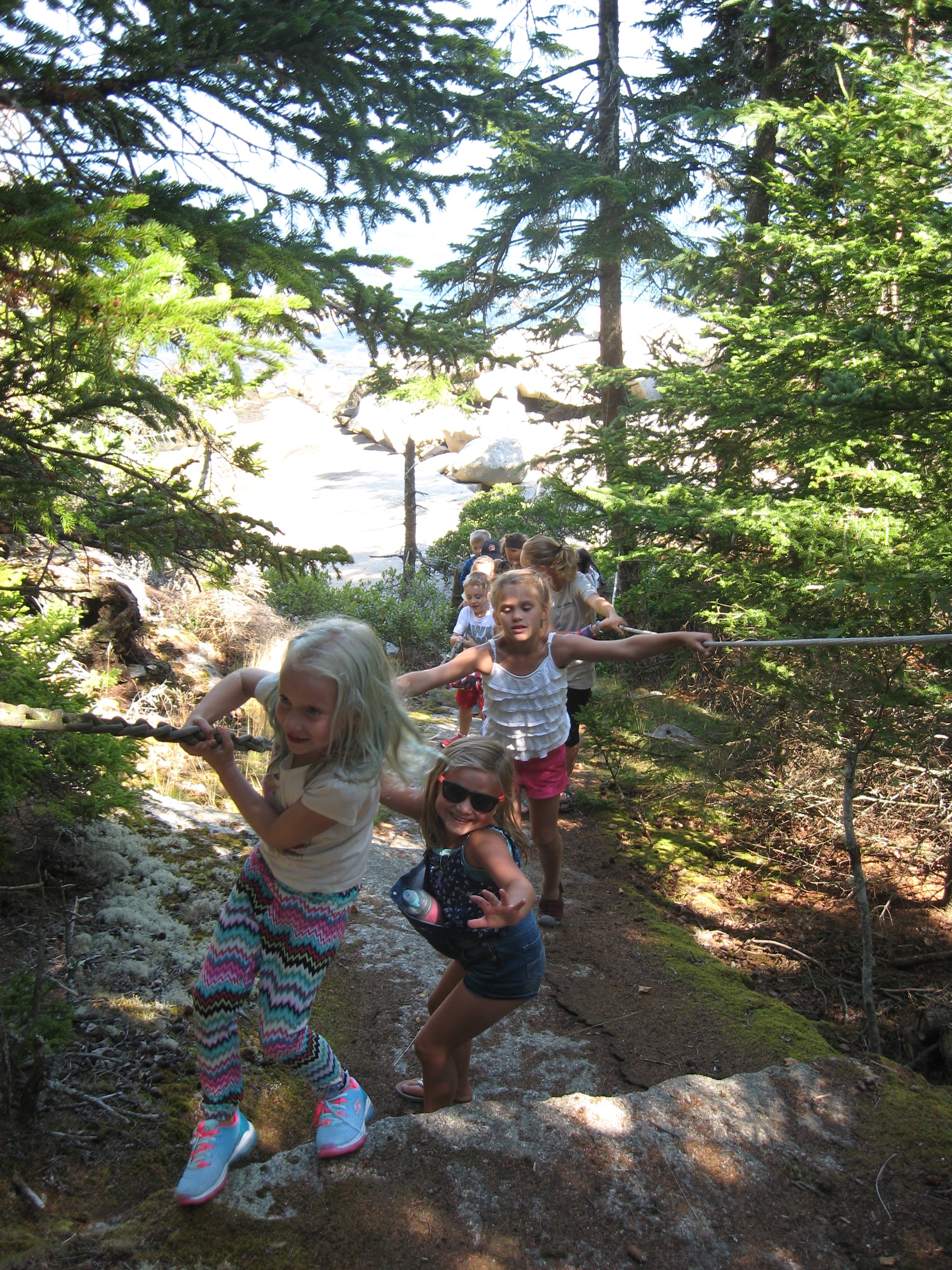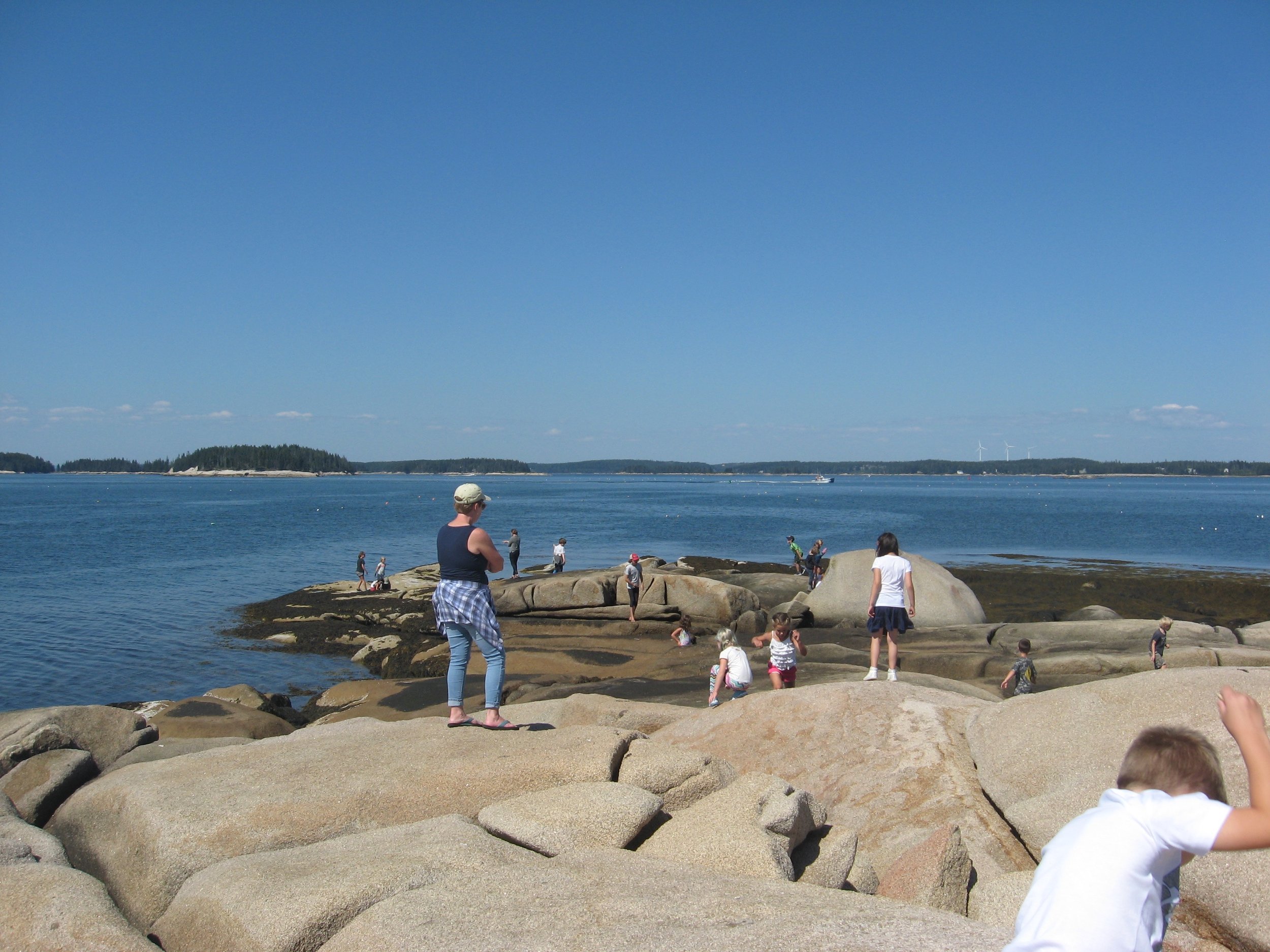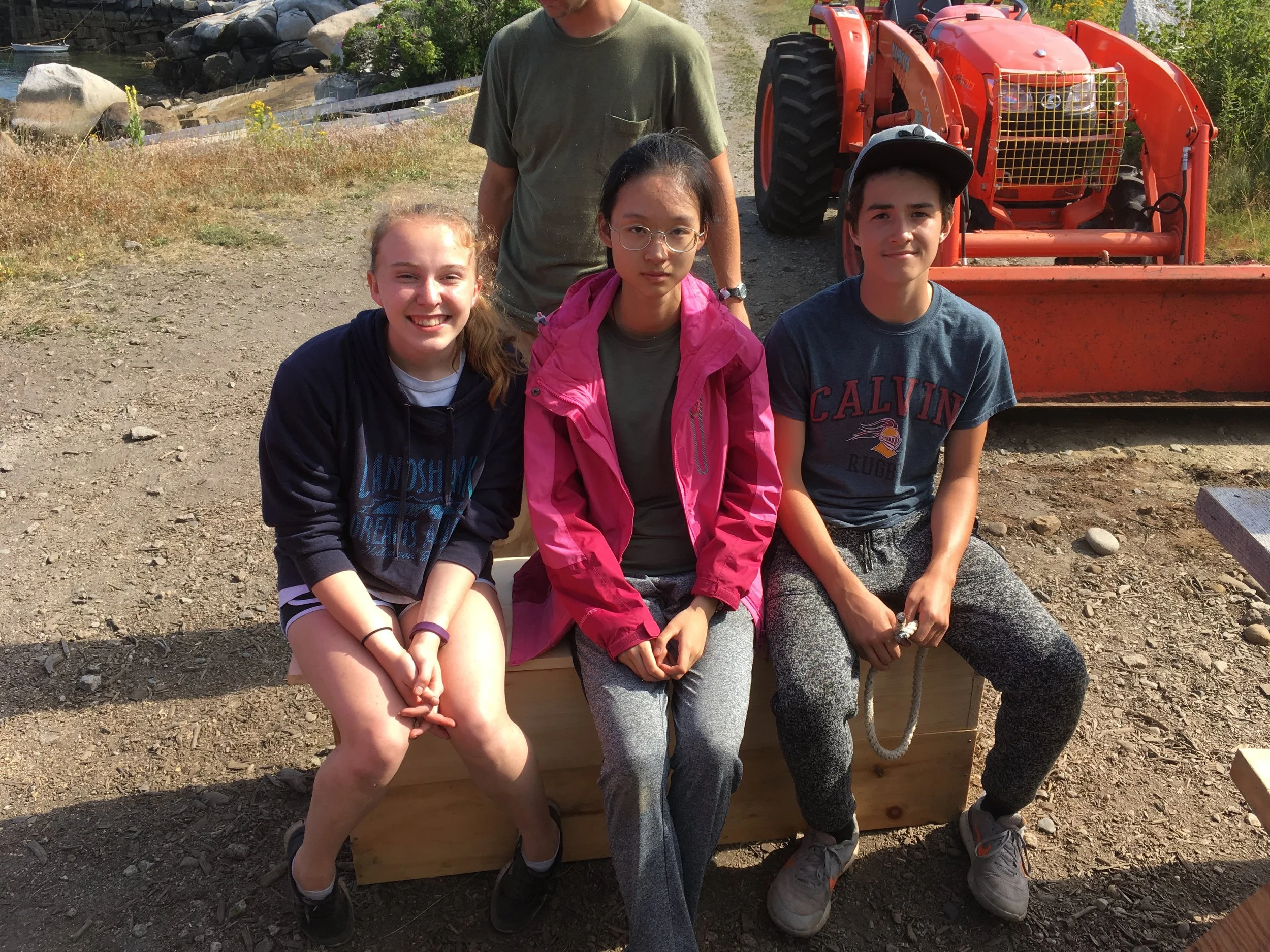Guest blog post by Science Educator Isabelle Holt
A student stands and uses his raft as a paddle board.
The students from Proctor Academy’s 2017 Ocean Classroom expedition came to Hurricane this past week to spend some time doing all-hands activities as well as building watch pride, before setting off for their term-long voyage aboard the Roseway. Proctor Academy partners with World Ocean School to give students the unique experience of not only learning marine science, literature, history, and navigation, but also allowing students to be active working members of the Roseway crew.
Unity and trust in one another are vital to the successful operation of any sailing vessel and this is what we aimed to build while the Proctor students were here on Hurricane. Proctor’s time on Hurricane is one of the few times that the whole group of students gets to spend quality time together while rotating through a slate of classic Hurricane Island activities and the call and response of ‘all hands’ rang out across the island whenever the attention of the entire crew was required.
Students from C watch stand by as their watch-mates make the crossing
The torrential rain, the effects of Hurricane Jose, did not deter us from getting out into the intertidal zone. This was the only time that these students will get to interact with the rocky intertidal environment as all of the science they will be doing aboard Roseway will be offshore. While on Hurricane, we encouraged students to start thinking about data and how different kinds of data are useful for different things through both collecting sea surface data as well as data on marine debris. After doing an extensive marine debris cleanup, each watch used the data collected to help them brainstorm a couple of solutions to the massive marine debris problem our oceans are facing. Some solution highlights included making cigarette filters out of biodegradable mushroom mycelium and inventing a underwater ocean WALL-E to compact trash bricks that could be used as sustainable building materials.
Each watch employs a different technique for getting across the pond
Students lobstered, squeezed through ‘the cracks,’ geologic formations caused by freezing water splitting granite boulders apart, enjoyed reflective sit-spots, rowed the gigs, and learned about all of the fabulous research occurring here on Hurricane. A crowd favorite was the raft challenge, where each watch of seven people was responsible for building a raft that could carry them across the ice pond and back without anyone falling into the drink. While only one team was successful this year, a good time was had by all and each watch learned how to work together more effectively moving forward.
Students renegotiate after disaster has struck their raft
We wish the Roseway fair winds and following seas as they set off on their journey. If you want to follow the progress of the 2017 expedition and all that these talented and engaging students are doing click here!











